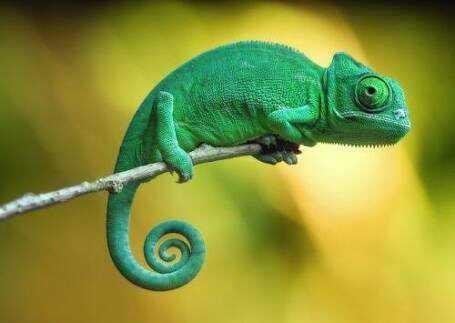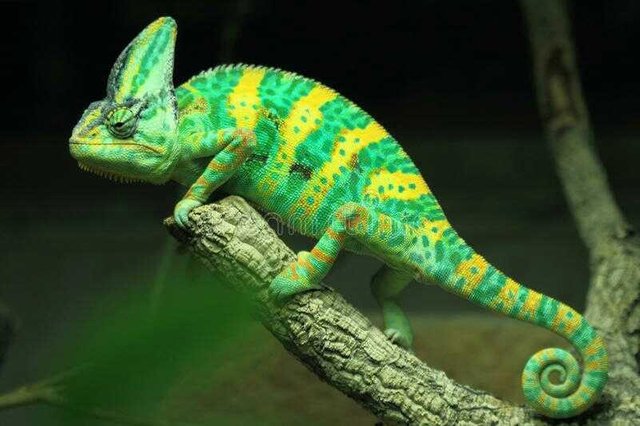The Chameleon's way of life and its Uniqueness
he chameleon is a kind of reptile belonging to the tribe (familia) of Agamidae. Other lizards that are still tribes are flying lizards (Dracospp.) And soa-soa (Hydrosaurus spp.).
Chameleons include several genera, such as Bronchocela, Calotes, Gonocephalus, Pseudocalotes and others. Chameleons can change the color of their skin, although not as good as chamaeleon changes (Chamaeleonidae). Usually change from bright colors (green, yellow, or light gray) to a darker, brownish or blackish color.

Almost half of the chameleon species in the world, live on the island of Madagascar, and 59 different species that exist outside Madagascar. A total of about 160 species of chameleons in the world. They range from Africa to southern Europe, and throughout southern Asia to Sri Lanka. They have also been introduced to the United States in places like Hawaii, California, and Florida.
Color Changes. Most chameleons change from brown to green and vice versa, but some can change to almost any color. A change can take place within 20 seconds. Chameleons are born with special cells that have color or pigment in them. These cells lie on the lower layers of the outer shell of the chameleon. They are called chromatophores (chromatophores). The top layer of chromatophores has a red or yellow pigment. The bottom layer has a blue or white pigment. When these pigment cells change, the chameleon's skin changes color.

Chromatophores change because they get messages from the brain. The message tells the cell to zoom in or out. This action causes the cell pigment to mix-like paint. A chemical compound called melanin also helps the chameleon to change color. Melanin fibers can spread like cobwebs through layers of pigment cells and their presence causes the skin to become darker.
Many people think the chameleons change color to blend in with their environment. Scientists disagree. Their research shows that chameleon light, temperature and mood are their reasons for changing color. Sometimes changing colors can make the chameleon more comfortable. Sometimes it helps communicate with other chameleon animals.
- The chameleon's eyes have 360-degree vision and can see both directions at once. The chameleon has the most distinctive eyes of any reptile. Their upper and lower eyebrows combine, with a hole the size of a needle for the pupil to see. They can rotate and focus separately to observe two different objects simultaneously, allowing their eyes to move independently of each other.
this 360-degree vision allows them to look around their bodies. When prey is located, both eyes can be focused in the same direction, giving a sharp stereoscopic vision and depth of perception. Chameleons have excellent vision for reptiles, allowing them to see small insects from a distance (5-10 m).
- The chameleon varies greatly in size and body structure, with a total maximum length varying from 15 millimeters (0.6 in) males of Brookesia micra (one of the smallest reptiles in the world) to 68.5 centimeters (30 in) of male furcifer oustaleti .
- His ballistic tongue has a length of 1.5 to 2 times their body length. The chameleon captures its prey which lies some distance by 'firing' its ballistic long tongue. While these chameleon tongues typically have a length of 1.5 to 2 times their body length (excluding tails), it has recently been found that small chameleons have a larger proportion of tongue apparatus than their larger counterparts. The speed of their Tongue while capturing its prey, is very high, ie in 0.07 seconds, and launched at acceleration exceeding 41 g. The tip of the chameleon's tongue is a round ball of muscle, and upon reaching its prey it quickly forms a small suction cup.
Vote exchange site https://mysteemup.club